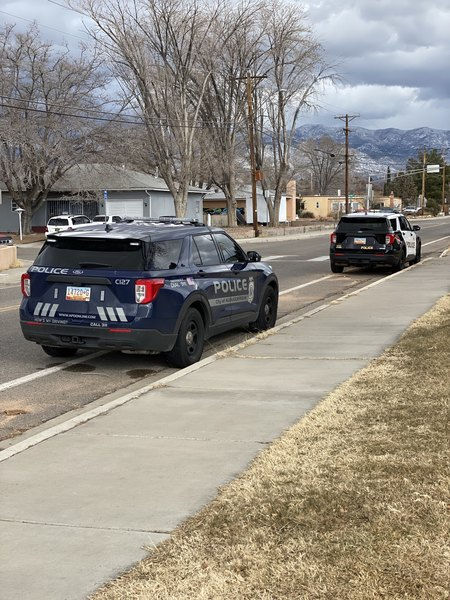What's In a Lane
- Jul 16, 2023
- 4 min read
by Susan Hering - Guest Blogger
BikeABQ invites and reviews guest bloggers' posts that contribute to collegial discussion about safe, sustainable and affordable biking – be it for recreation and/or transportation. However, BikeABQ does not verify nor endorse this or any guest blogger posts. Rather, we welcome a wide range of perspectives that foster friendly and fruitful dialog toward our shared mission of Safe Streets + Community Events + Smart Mobility!
In 2016, a university student in Chicago named Christina Whitehouse was nearly run over by a truck. The truck driver shrugged off her justifiable anger and fear. Chicago, at that time, was hailed as the Best Bicycling City in the nation. Two weeks later Whitehouse heard of a bicyclist killed in similar circumstances, and the next fall a bicyclist was killed near her college campus. When she graduated, she built an app she named Bike Lane Uprising (BLU). Chicago media discovered it. Today, over 56,000 bike lane obstructions have been recorded across the US, along with a wealth of data about bicycling conditions and indifferent drivers.
Check it out. Download the app (free, although BLU welcomes and needs donations); see what kind of data BLU is making available to bicyclists and policy makers/planners/police. It’s mapped, it can be broken down by outcome (was there a crash involving the obstruction?), time, type of obstruction, and place. It’s being used by cities from California to Louisiana and all along the eastern seaboard. of offending vehicles with or without license plates visible can be used to identify and ticket repeat offenders. (Spoiler: There are LOTS of repeat offenders!)
What’s deemed a “bike lane obstruction?” Basically, it’s anything that’s NOT a bicycle with a rider. Garbage and garbage trucks, broken glass and snapped tree branches, “portable” storage units, and junk no one bothered to put in a storage unit. Even organic intrusions like this photo shows invade and diminish our space on the roads.

But mostly it’s motor vehicles, with, as you may guess, a decided emphasis on trucks. Service trucks, delivery trucks, and lots and lots of passenger trucks trying hard to look like army tanks.
In Chicago, the plethora of reported pictures and the accompanying data have resulted in increased ticketing and new investigations of crashes involving motor vehicles and bicycles. The Inspector General's office there is now taking bicycle crashes under its jurisdiction. Crashes are predictable when bicyclists are suddenly forced to swerve into lanes of fast moving vehicles. Crash outcomes are even more predictable: Bicyclists lose. Sometimes they lose their lives.
Think about it. What would the public response be like if an Amazon delivery truck or an electrician’s big work truck parked in the middle of a car lane for the day? Picture a two-way, two lane street – we do have a few of these in Albuquerque – and this vehicle completely blocking the lane YOU want to travel. No one’s in the truck. Honking your horn does nothing. Cursing does even less. You’ve got places to go. Cars are stacking up behind you. You are so close to the parked truck you can’t see if traffic is oncoming from the opposite direction. You take a deep breath and give your car an extra shot of power and, well, I’d be praying. You take a chance.
A bicyclist’s chances are always weighted, mostly because our mode of transportation does not have much weight. In an “encounter” with a motor vehicle, even a smaller one, we lose. We have to claim the little bit of safer space we are afforded with a bike lane. We need to report the bike lane obstructions we see every single time we ride and then press the City to follow-up. We are making some progress with ticketing speeders now that we have grown our traffic enforcement camera installations. Let's do the same with those who force us out of our designated lanes into car traffic.
We don’t have many decently protected bike lanes in ABQ. Paint is not protection. Paint does not deter drivers from entering our little lanes. What little rainfall we get comes fast and moves rapidly down our vast cement corridors, leaving lots and lots of water-born litter, plastic bags and bottles, old cardboard signs left behind by our panhandlers, branches, leaves, and the ubiquitous single sneaker of course. This debris is also deadly for our skinnier, more sensitive tires. Again, we cast a nervous glance over our left shoulder and slip into the car lane.
The BLU app is simple and thorough. It does most of the work of reporting for you. If you’re taking a photo of the offense, you may have to stop to safely pull out your phone and click it, but photos are not mandatory. Do we need it here in ABQ? If you ride on our roadways, you know. I asked Whitehouse if BLU was getting many reports from our riders. She brought up a map from the app. There were 3 dots where we live. Three. We can’t identify the root causes of bike crashes if we don’t report our conditions. When we identify “hot spots” of obstructions and repeat offenders, we take an important step toward establishing safer riding.

Download it. Try it out. Leave a comment here with your thoughts about bike obstructions in Albuquerque. And let your city councilor and maybe even the mayor’s office know what you’re seeing out there. Numbers can make a difference. The focus of this app on a single urban problem and the resultant ability for the public to readily access and use the aggregated data gives it an immediacy and persuasive power 311 does not have. It's true in more than one way for those of us who bike on Albuquerque's roadways: There is safety in numbers. Let's generate some numbers!
Ride safely.
Comments